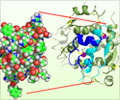Frequent visits to a primary care physician associated with improvements in blood glucose, blood pressure and cholesterol levels among patients with diabetes, finds report.

Fritha Morrison, M.P.H., from Brigham and Women's Hospital, Boston, and colleagues conducted a retrospective cohort study to determine whether more frequent encounters with a physician help patients improve control of diabetes. The authors analyzed data from 26,496 adult patients with diabetes and elevated hemoglobin A1c, BP and/or LDL-C levels who visited primary care physicians affiliated with two Boston hospitals for at least two years between January 2000 and January 2009. Treatment goals at the beginning of the study were hemoglobin A1c of less than 7 percent, BP of less than 130/85 mm Hg (millimeters of mercury) and LDL-C of less than 100 mg/dL (milligrams per deciliter). The researchers assessed the relationship between the frequency of clinician encounters (defined as notes in the medical record) and time to control of hemoglobin A1c, BP and LDL-C.
Among patients who had encounters with their physicians every one to two weeks, the median (midpoint) time to reaching the treatment goals was 4.4 months (without insulin) and 10.1 months (with insulin) for hemoglobin A1c, 1.3 months for BP and 5.1 months for LDL-C. Among patients who had physician encounters every three to six months, the median time to goal achievement was 24.9 months (without insulin) and 52.8 months (with insulin), 13.9 months and 32.8 months, respectively. When, after analysis, the time between physician encounters was doubled, the median time to reaching hemoglobin A1c goal increased 35 percent without insulin and 17 percent with insulin; for BP and LDL-C, these median times to goal increased 87 percent and 27 percent, respectively. As the physician encounter frequency increased up to once every two weeks for most goals, the time to control decreased progressively, consistent with the pharmacodynamics (the time course and effects of medications) for the respective classes of medication.
"The present findings provide evidence that for many patients with elevated hemoglobin A1c, BP, or LDL-C, more frequent patient-provider encounters were associated with a shorter time to treatment target, and control was fastest at two-week intervals," report the authors. They suggest that this interval may be appropriate for the most severely uncontrolled patients, but recognize that innovative approaches to achieve this frequency may be necessary because of the increasing demand on health care resources. The authors add, "The retrospective nature of this study prevents us from establishing a causal relationship between encounter frequency and patient outcomes," and call for further research.
Source-Eurekalert















